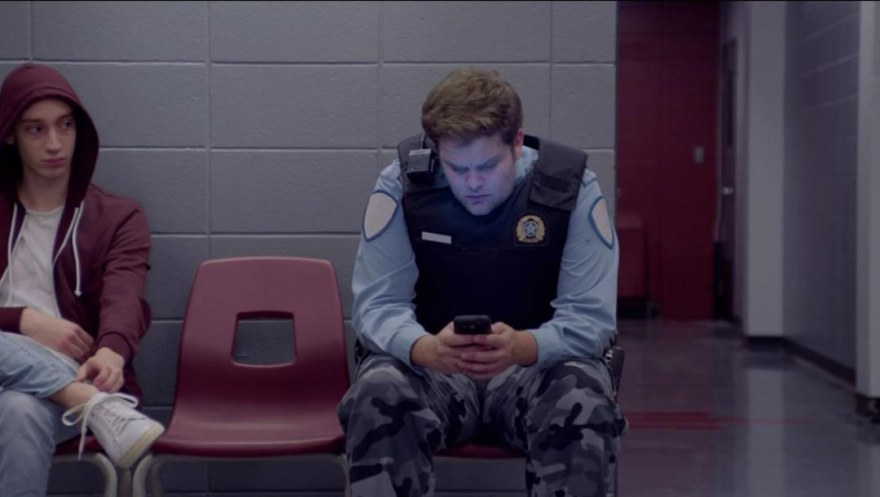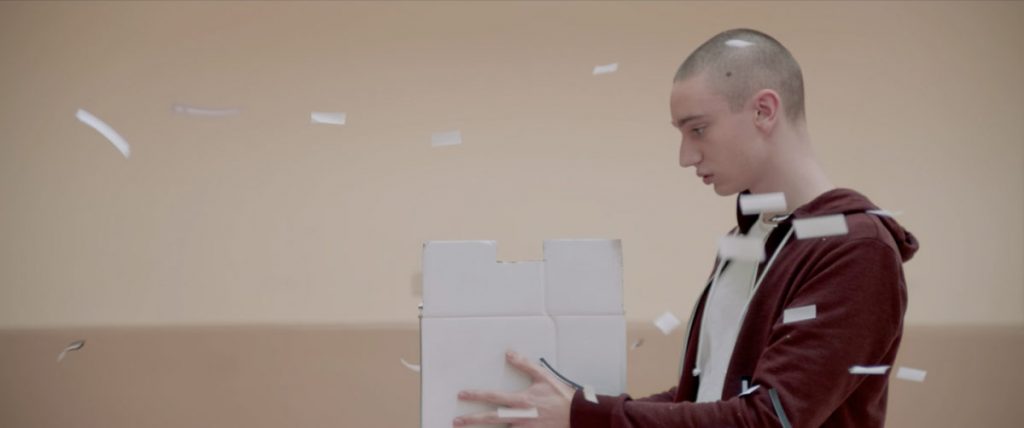Breakfast with Sigismond sans images (Sigismond without pictures)
Interview with Albéric Aurtenèche, director of Sigismond sans images (Sigismond without pictures)
Can you tell us about Sigismond’s insistence that he is Echo and not Narcissus?
Thanks for this marvelous question which actually touches the essence of the film. With the development of the mobile phone over the past decade, the « digital revolution » gave us an absolute control on images, from their creation straight to their diffusion. The utmost example of this control is of course the selfie, with which you are able to decide the angle, framing, background, etc. of your own picture, then retouch it to give it the right look, and publish it on the network of your choice.
But selfies are merely one (literal) aspect of one’s control on one’s image. Social networks allow the same control, this time by letting us post chosen images of our lives, write weighed opinions on specific subjects, relay selected articles, videos, music that we believe will represent ourselves in a most flattering way. In short, today’s individual is often preceded, in real life, by some kind of virtual image of themselves.
This new control of one’s image obviously questions the way we construct ourselves in this world of images. The trouble, to me, is that we tend to answer these questions through a unique concept coming from the century-long hegemony of one thinker: Freud’s narcissism (a concept refined, needless to say, by many followers). The myth of Narcissus as a human fundamental has become such a part of common knowledge that we apply it blindly to every manifestation of the reflective self.
With this single perspective on human nature, we interpret the massive use of social networks as a will of individuals to construct a tautological persona for their own sole pleasure. This is, in fact, how the generation who mainly uses these networks (for now) is perceived: self-centered and narcissistic. During the massive 2012 student strike here in Québec, which developed into a comprehensive social movement, the young (the « Millennials » or so-called « Generation Me ») were regarded as spoiled children disrupting the well-functioning society of their parents for egoistic purposes. Their social demands, by definition oriented towards the common good, were reduced to a battle for personal interests.
This is where the myth of Echo appeals to Sigismond. As a double (in negative) to Narcissus, she represents a very different relation to images. Invisible to her beloved, unable to communicate with him but by repeating what he says to himself, she witnesses him die for his own image, and in sadness vanishes into a bodiless, imageless, selfless voice. Whereas Narcissus makes for an egocentric relation to images, Echo evokes an exclusion from the world of images. She is those of us who look in the mirror not out of vanity, but to reassure themselves in a world ruled by appearances. She is those of us who build a virtual persona in order to futilely give more reality to their very existence. She is those of us who feel, for one reason or another, that they have no grasp on a society modeled by others.
Why did you choose to tell his story?
I modestly took part in the 2012 demonstrations to preserve a more open access to education, against a self-entitled, contemptuous neo-liberal government willing to cut money where, I think, it really matters. Like all of us who had previously fallen into cynicism, I believed for once that something was possible, only to be deceived again, crashed on the wall erected by an indifferent, comfortable and fearful majority. The deep feeling of powerlessness, voicelessness I ended up with inspired the character of Sigismond.
Can you shed some light on the “interrogation space”? Why are all the characters sat with their backs to the room’s corner?
There’s a very trivial answer to this question. The film was shot with very little money out of my credit card. We managed to get access to this location for free. We liked the texture of the walls, and I wanted to shoot the first part, with the aging psychiatrist, with the camera sitting in front of the characters. We simply decided for an option that wouldn’t result in a flat background. It’s funny to mention that we used the exact same corner for every angle of the interrogation space, only moving around the furniture and props.
I’m sure there are symbolic interpretations to make out of this esthetic choice, but I’ll leave that to the viewer.
If you’ve already been to Clermont-Ferrand, could you share with us an anecdote or story from the festival? If not, what are your expectations for this year?
I was present in 2008, only with a film that wasn’t part of the competition. I made great encounters, some of them leading to good opportunities in other European festivals. The film had a nice subsequent life in festivals around the world.
It’ been a while now, and I hadn’t made a new film since 2010 before Sigismond. I simply wish that my presence this year will broaden the diffusion and visibility of this film, and maybe trigger discussions around its themes.
I also have a feature film project, coproduced by Metafilms in Montreal and by Les films d’Antoine in France. We’re still building the financial structure, which should mostly be French. I’m well aware that Clermont is a short film festival, but I’ll be there with this project in the back of my head.
Are any other releases scheduled?
It will be presented at the Rendez-vous du cinéma québécois, end of February. Other than that, all options are open.
Are you taking part in other events during the Clermont–Ferrand Short Film Festival? (Espressos, Conferences, other?)
I’m part of the Espressos meetings, and I’ll certainly be hanging out around the Québec/Sodec counter in the exhibition hall of the Short Film Market.
Sigismond sans images is being shown in International Competition I11.









